Intel Core i7-5775C Review: More Than Meets the Eye
GPU Benchmarks
Using AIDA64’s GPGPU benchmark we see how IGP memory behaves as well as the floating point operation numbers. Traditionally, integrated graphics are choked in terms of memory bandwidth in comparison to discrete GPUs but the eDRAM cache operating at 1.8GHz on the i7-5775C considerably helps with the performance.
Gaming Benchmarks
These tests are all strictly using the integrated graphics and no discrete GPUs are used. Starting with two Unigine programs (synthetic 3D benchmarks which exclusively load the GPU through advanced tessellation, lighting and other DX11 effects) the i7-5775C shows more than twice the performance improvement over the HD 5600 integrated graphics on the i7-4770K. Part of the promotional slides for the Broadwell release promises 2X the graphical power so it is nice to see it verified right off the bat. More importantly, AMD’s formidable Radeon R7 graphics has been dethroned and considerably so, with the gap between the 4770K and the APU closer than the gap between the APU and the HD 6200 GPU.
Moving on to semi-synthetic loads from 3DMark which generates a combined benchmark from a mix of exclusively graphical tests and CPU physics tests, performance shows a comparable gain. The green bar represents the physics score which is entirely CPU-bound hence the large advantage of the two Intel CPUs over the AMD A10-7850K, but even with the higher frequency advantage of the i7-4770K out of the box, the i7-5775c has a convincing lead.
With real world games in 1920×1080, the HD 6200 pushes performance levels to above 30+fps even when using a HIGH quality preset in Alien Isolation, Bioshock Infinite and Tomb Raider. The notoriously demanding Metro Last Light (non-Redux) is even playable at the lowest preset.
Gaming Performance vs RAM Frequency
Memory speed affects gaming performance on Broadwell and shows big gains at 2133MHz compared to 1600MHz and 1866MHz with tighter timings. Only Metro Last Light shows a gradual increase but for everything else, the jump from 1866MHz to 2133MHz is massive.
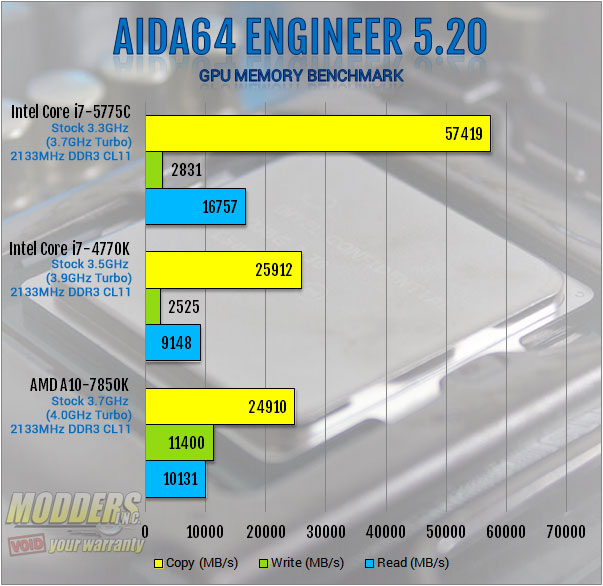
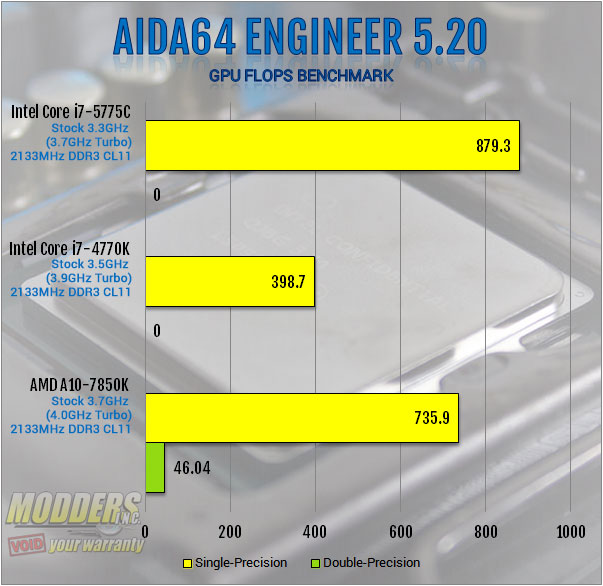


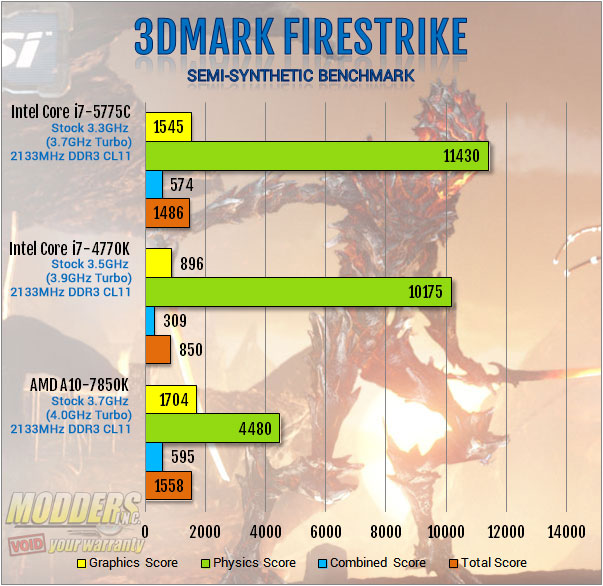
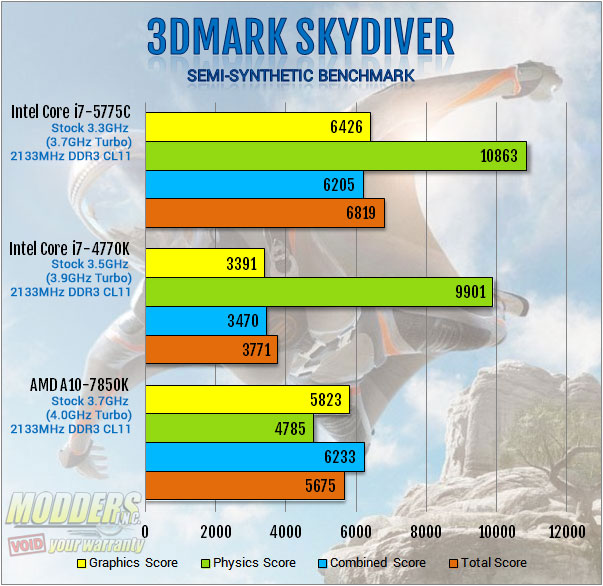
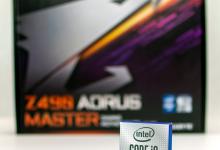
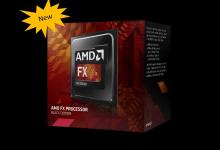
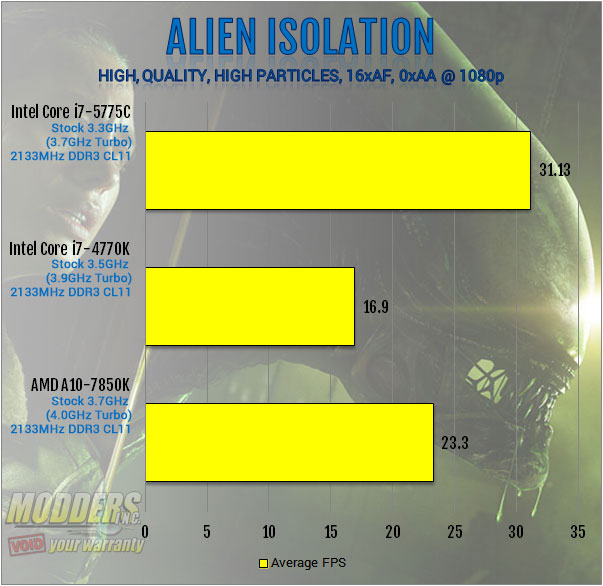
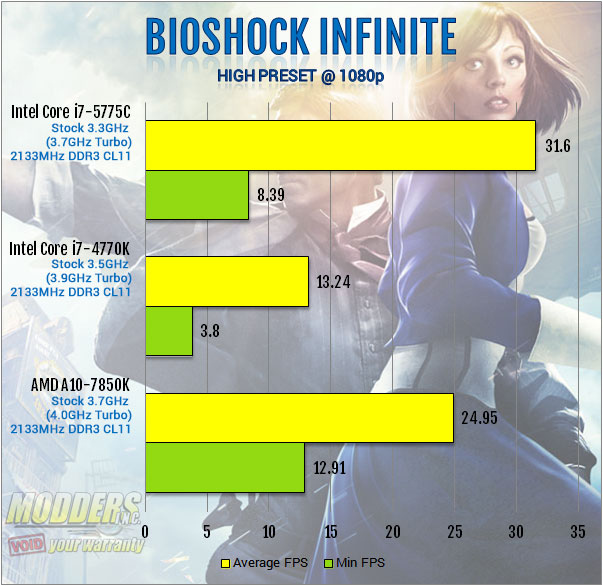
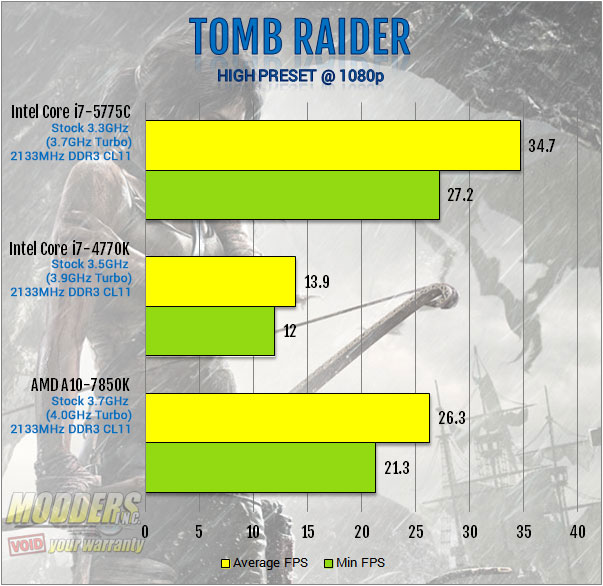
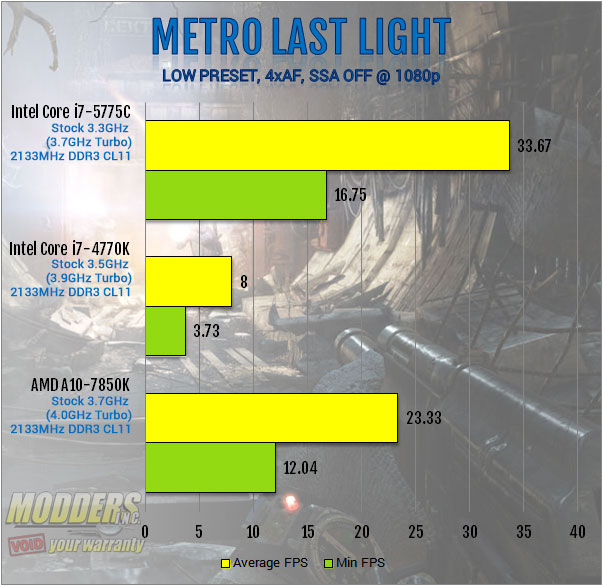
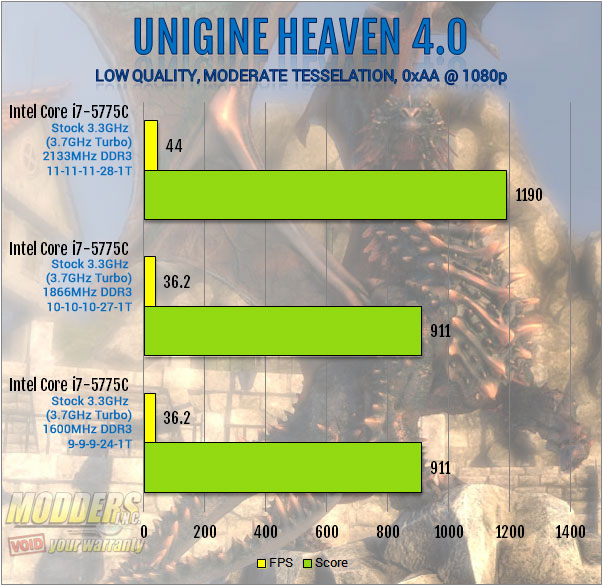
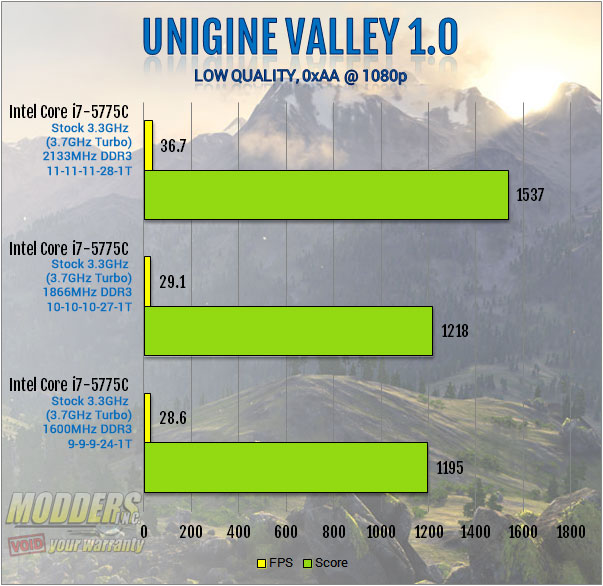
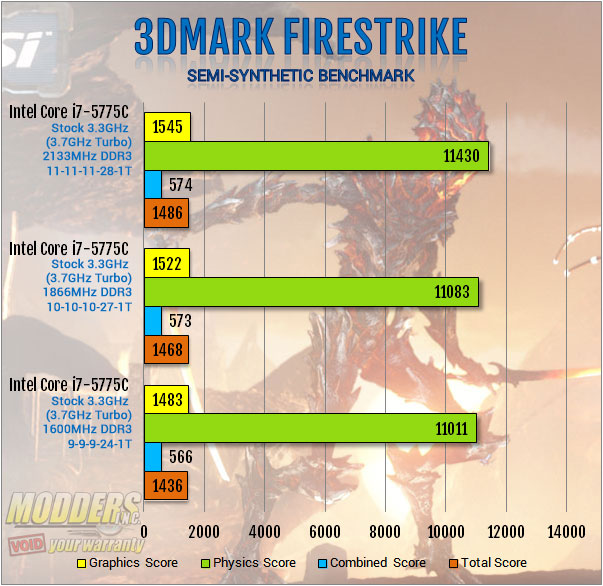
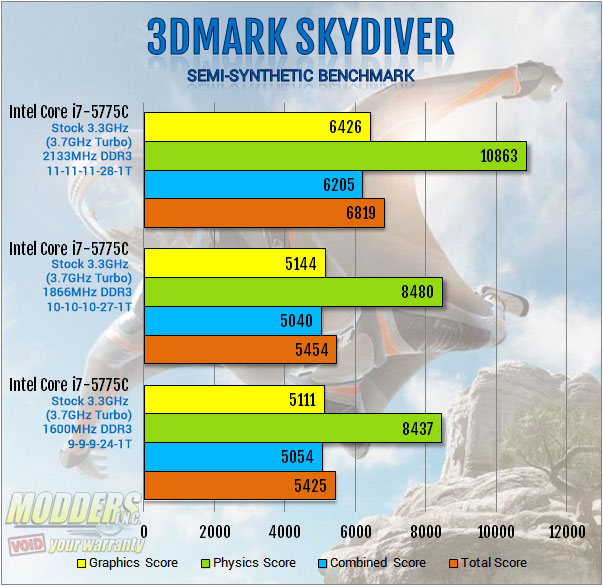
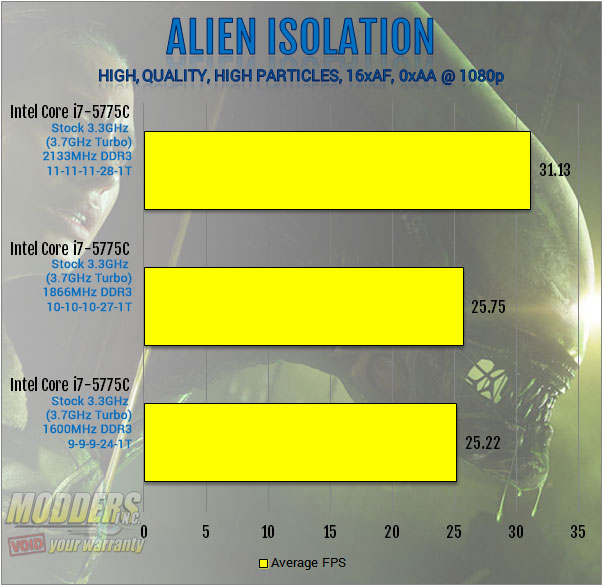
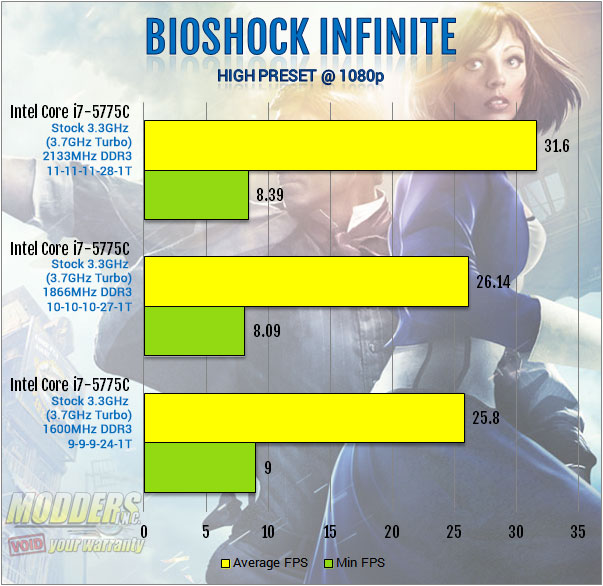
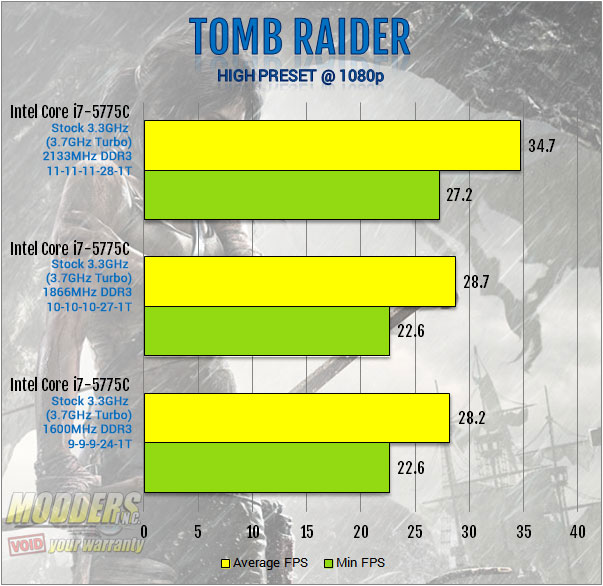
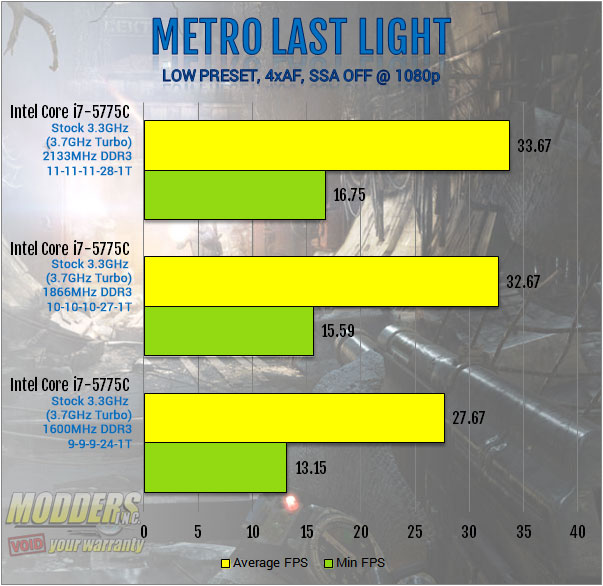


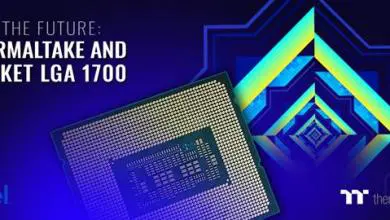
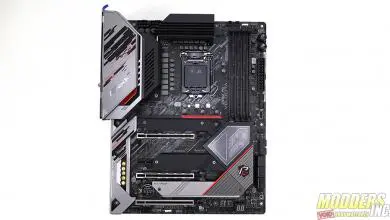
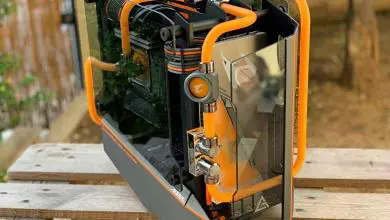
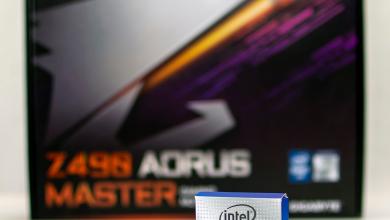

Wow man what can I say. Excellent review, I am a bit disappointed that the 5775C does not have at least the same frequency of the 4790K, I believe for people that have machine that do not use a graphics card, this might be a better choice because of the Intel graphics. Plus the fact that the 5770C is LGA and not BGA is also a plus. My understanding is that with BGA you have to change out the whole motherboard also. So for people that are using a previous 1150 build to upgrade, this would make the chip not worth the trouble. I would love to see what GPU the new 6200 graphics stack up against. Again Ron, very informative and excellent review.
Thank you very much Alan. Yeah, although looking at it from Intel’s perspective this is a win for them. This move will push more of the enthusiast crowd to the HEDT/Intel Extreme platform while increasing the userbase of the mainstream desktop platform for those that want a capable integrated IGP with a more powerful CPU and those who want a more powerful option than what AMD offers.
people who are going to buy an i7 problably wont be using the integrated graphics and the point of AMDs apus where never to be high end they gave decent gaming performance at 720p this are entirely different consumers they guy that thinking of buying an APU is not going to buy an intel processor
Brilliant processor. Fast and cool!
I am sorry for AMD they are 1 or 2 steps behind from Intel it seems
Someone that wants performance will surely choose this processor over anything that AMD offers right now